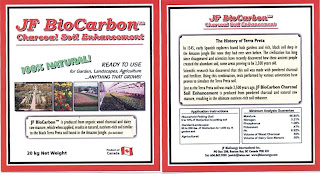Golf courses can
suffer devastating damage due to over fertilizing or chemical spills. The
University of Florida’s 2009 Pest Control Guide for Turf Managers states that
it is a good idea to keep a bag or two of activated charcoal in stock at all
times when managing fine turf so that the activated charcoal can be applied
almost immediately without having to wait for delivery after an accidental
spill.
A high end golf
course in South Carolina lost months of play during the peak tourist season due
to an accidental mix-up in which weed killer instead of fertilizer was sprayed
on several fairways. Activated carbon effectively removes organic toxins, such
as herbicides, from soil, to provide a safe environment for new or existing
root systems. Once the
toxin has been
adsorbed onto the carbon, it is biologically inactive and cannot cause further
damage.
The DirtDoctor website
is dedicated to the issues that affect organic gardeners and covers a
widerangeof topics. In response to a question on “Soil Detox for Contaminated
Soil” the website expert, Howard Garrett, replied: “Digging the soil out and
hauling it off is not the answer. If your soil has been contaminated with heavy
metals like arsenic and chromium in treated lumber or creosote in railroad
ties, or with lead and arsenic from iron supplements, or if the contamination
is from pesticides or petroleum spills, the solution is the same. First, stop
the contamination. Second, apply the activated charcoal/ carbon.”
Another
way that the activated carbon will
protects the environment is its use in removing pesticides from streams
and rivers by spraying the edges of fields. This prevents harmful chemicals
from entering waterways and contaminating not only the water, but also the
aquatic life and plants that make up their fragile ecosystems.
Activated
carbon provides unique performance capabilities that help protect our environment.
It is widely used in agriculture as a soil amendment to protect and enhance
plant and turfgrass growth and vigor. Its ability to decontaminate soil is
beneficial when replanting ornamentals, turfgrass or food crops where
herbicides have been previously applied. The effectiveness of activated carbon
for these applications has made it the product of choice of leading industry
professionals.
To reach that purpose
of course, reliable industrial charcoal plant needed to support that activated
carbon industry. Our system will produce charcoal as you wish, as we fully
realize that activated carbon industry need high quality charcoal for their
consintent quality of activated carbon.







